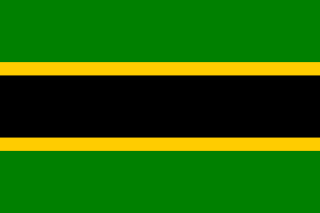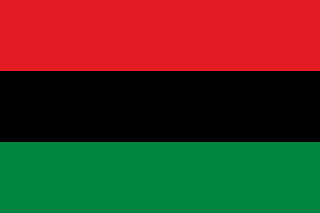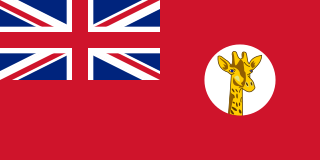The modern-day African Great Lakes state of Tanzania dates formally from 1964, when it was formed out of the union of the much larger mainland territory of Tanganyika and the coastal archipelago of Zanzibar. The former was a colony and part of German East Africa from the 1880s to 1919’s when, under the League of Nations, it became a British mandate. It served as a British military outpost during World War II, providing financial help, munitions, and soldiers. In 1947, Tanganyika became a United Nations Trust Territory under British administration, a status it kept until its independence in 1961. The island of Zanzibar thrived as a trading hub, successively controlled by the Portuguese, the Sultanate of Oman, and then as a British protectorate by the end of the nineteenth century.

Tanganyika was a sovereign state, comprising the mainland part of present-day Tanzania, that existed from 1961 until 1964. It first gained independence from the United Kingdom on 9 December 1961 as a Commonwealth realm headed by Queen Elizabeth II before becoming a republic within the Commonwealth of Nations a year later. After signing the Articles of Union on 22 April 1964 and passing an Act of Union on 25 April, Tanganyika officially joined with the People's Republic of Zanzibar to form the United Republic of Tanganyika and Zanzibar on Union Day, 26 April 1964. The new state changed its name to the United Republic of Tanzania within a year.

Julius Kambarage Nyerere was a Tanzanian anti-colonial activist, politician and political theorist. He governed Tanganyika as prime minister from 1961 to 1962 and then as president from 1962 to 1964, after which he led its successor state, Tanzania, as president from 1964 to 1985. He was a founding member and chair of the Tanganyika African National Union (TANU) party, and of its successor Chama Cha Mapinduzi, from 1954 to 1990. Ideologically an African nationalist and African socialist, he promoted a political philosophy known as Ujamaa.

African socialism or Afrosocialism is a belief in sharing economic resources in a traditional African way, as distinct from classical socialism. Many African politicians of the 1950s and 1960s professed their support for African socialism, although definitions and interpretations of this term varied considerably. These politicians include Julius Nyerere of Tanzania, Kwame Nkrumah of Ghana, and Modibo Keita of Mali, among others.

Thomas Joseph Odhiambo Mboya was a Kenyan trade unionist, educator, Pan-Africanist, author, independence activist, and statesman. He was one of the founding fathers of the Republic of Kenya. He led the negotiations for independence at the Lancaster House Conferences and was instrumental in the formation of Kenya's independence party – the Kenya African National Union (KANU) – where he served as its first Secretary-General. He laid the foundation for Kenya's capitalist and mixed economy policies at the height of the Cold War and set up several of the country's key labour institutions.

Kanyama Chiume, born Murray William Kanyama Chiume, was a leading nationalist in the struggle for Malawi's independence in the 1950s and 1960s. He was also one of the leaders of the Nyasaland African Congress and served as the Minister of Education and the Minister for Foreign Affairs in the 1960s before fleeing the country after the 1964 Cabinet Crisis.

Abdulrahman Mohamed Babu was a Zanzibar-born Marxist and pan-Africanist nationalist who played an important role in the 1964 Zanzibar Revolution and served as a minister under Julius Nyerere after the island was merged with mainland Tanganyika to form Tanzania. He was jailed by Nyerere from 1972 and, after his release following an international campaign, remained a vocal critic of imperialism, authoritarian states and excessively statist development models.
Godfrey Mwakikagile is a Tanzanian scholar and author specialising in African studies. He was also a news reporter for The Standard — the oldest and largest English newspaper in Tanzania and one of the three largest in East Africa.

Paul Lazaro Bomani was a Tanzanian politician and ambassador to the United States and Mexico.

Oscar Salathiel Kambona was the first Minister of Foreign Affairs of Tanganyika from 1963 to 1966.

Tanganyika was a colonial territory in East Africa which was administered by the United Kingdom in various guises from 1916 until 1961. It was initially administered under a military occupation regime. From 20 July 1922, it was formalised into a League of Nations mandate under British rule. From 1946, it was administered by the UK as a United Nations trust territory.
The Articles of Union of Tanganyika and Zanzibar of 1964 is the main foundation of the Constitutions of the United Republic of Tanzania of 1977 and the Zanzibar Revolutionary Government of 1984. The Articles of the Union were signed on April 22, 1964, by the Founders of the Union, Julius Nyerere and Abeid Amani Karume and agreed in 11 matters which later increased to over 22 and are the source of tension and dispute between mainland Tanzania mainland and Zanzibar. See Uamsho movement. The original Articles of Union which contain both Signatures from Nyerere and Karume are yet to be found.

Elizabeth II was Queen of Tanganyika from 1961 to 1962, when Tanganyika was an independent sovereign state and a constitutional monarchy. She was also the monarch of other sovereign states, including the United Kingdom. Her constitutional roles in Tanganyika were mostly delegated to the governor-general of Tanganyika.
John Mwakangale was one of the main leaders in the struggle for independence in Tanganyika during British colonial rule. When the country gained independence, Mwakangale joined the first cabinet of Julius Nyerere, the first President of Tanzania as Minister of Labour. Mwakangale is also regarded as a Pan-Africanist and a staunch African nationalist. He was also the first leader whom Nelson Mandela met in 1962 when he escaped from prison seeking assistance from other African leaders. Mandela gave a detailed account about that encounter in his book Long Walk to Freedom.
Malangali Secondary School was one of the leading academic institutions in colonial Tanganyika. It retained its reputation for academic excellence after Tanganyika won independence from Britain in December 1961.

Bibi Titi Mohammed was a Tanzanian politician and activist. She was born in June 1926 in Dar es Salaam, at the time the capital of former Tanganyika. She first was considered a freedom fighter and supported the first president of Tanzania, Julius Nyerere. Bibi Titi Mohammed was a member of the Tanganyika African National Union (TANU), the party that fought for the independence of Tanzania, and held various ministerial positions. In October 1969, she was sentenced for treason, and, after two years in prison, received a presidential pardon.
Austin Shaba was one of the leaders of Tanganyika, later Tanzania, from the time the country won independence from Britain on 9 December 1961.
Freedom of religion in Tanzania refers to the extent to which people in Tanzania are freely able to practice their religious beliefs, taking into account both government policies and societal attitudes toward religious groups.

Tanzania–Yugoslavia relations were historical foreign relations between Tanzania and now split-up Socialist Federal Republic of Yugoslavia. During the Cold War both countries actively participated in the work of the Non-Aligned Movement. President of Yugoslavia Josip Broz Tito visited Tanzania in 1970 while President of Tanzania Julius Nyerere visited Yugoslavia on three occasions in 1961, 1969 and in 1975. 1961 visit to Yugoslavia was the first official international visit by Nyerere and it took place even before the formal independence was declared later that year.











